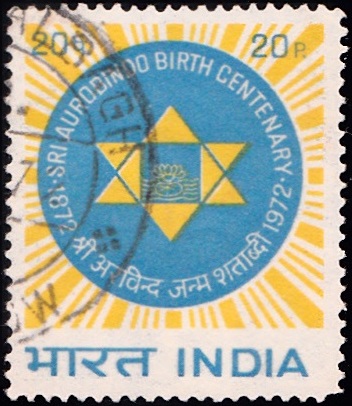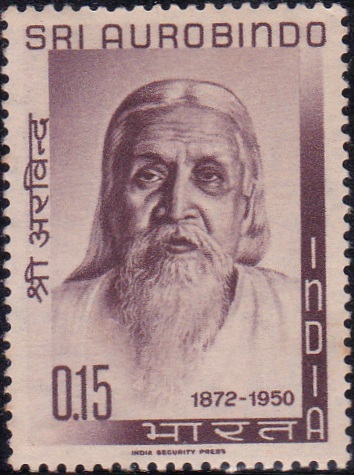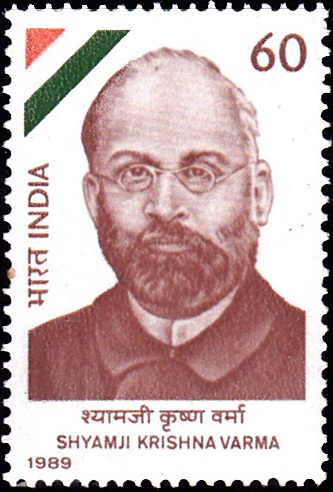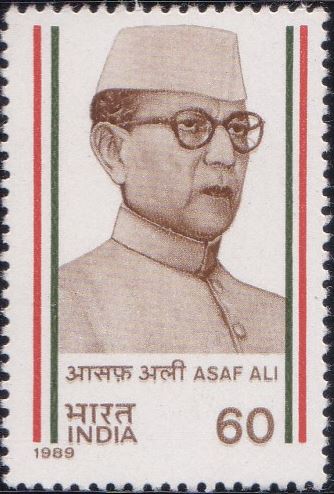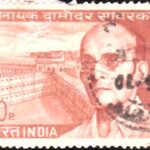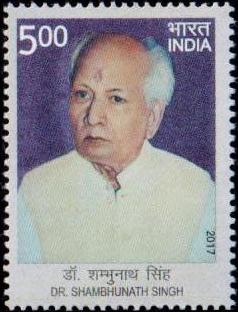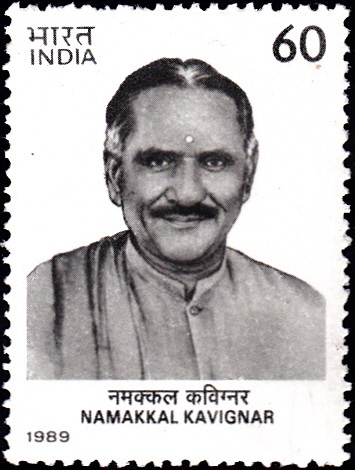
Namakkal Kavignar
A commemorative postage stamp on the Birth Centenary of Namakkal V. Ramalingam, a Tamil poet known for his poems about independence :
 Issued by India
Issued by India
Issued on Oct 19, 1989
Type : Stamp, Mint Condition
Colour : Single colour
Denomination : 60 Paise
Overall size : 3.91 x 2.90 cms.
Printing size : 3.55 x 2.54 cms.
Perforation : 13 x 13
Paper : Indigenous un W/M P.G. Coated gummed stamp paper
Number Printed : 10,00,000
Number per issue sheet : 35
Printing Process : Photogravure
Printed : India Security Press
Name : Namakkal Venkatarama Ramalingam Pillai
Born on Oct 19, 1888 at Mohanur, Namakkal district, Madras Presidency, British India [now in Tamil Nadu, India]
Died on Aug 24, 1972
About :
- V. Ramalingam Pillai, popularly known as Namakkal Kavignar, was born on 19th October, 1888 at Mohanur, a small hamlet on the banks of Cauvery river in Salem District. His father was a head constable at Mohanur and mother was a pious lady from Salem. The family had seven daughters before Ramalingam was born. He was, therefore, regarded as a gift of God.
- Ramalingam had his primary education at Nammalwar School at Namakkal in Tamil Nadu, and high school education at a mission school at Coimbatore. He did his FA in 1909, from Bishop Heber College at Tiruchirapalli. His father desired Ramalingam to become a sub-inspector and later forced him into the jobs of a clerk, at the Namakkal Tahsildar’s office, and of a school teacher, in an elementary school, both of which Ramalingam disliked. He subsequently took up the profession of the wealthy chettiars of Chettinad. In the 1911 Delhi durbar, Ramalingam presented his portraits of King George V and the Queen and was honoured with a gold medal.
- Inspired by Bal Gangadhar Tilak and Aurobindo, Ramalingam entered politics as an extremist but later became an ardent follower of Mahatma Gandhi. As a boy, he had a taste for poetry and wrote songs for operas. During the freedom struggle, he not only became a veteran Congress leader of Namakkal and Trichy during the 1920s, but also wrote a hundred poems with patriotic fervour named ‘Nattu Kummi‘. During the 1930 Salt Satyagraha, the Satyagrahis led by Shri Rajagopalachari, marched from Tiruchi to Vedaranyam, singing a song composed by Ramalingam. The song won him fame as a patriotic, Gandhian poet. In 1932, he was jailed for one year for his participation in the Salt Satyagraha.
- Ramalingam also wrote novels, the more prominent of which, titled ‘Malaikallan‘ was filmed in five languages and won the President’s medal in 1954. His commentary on ‘Thirukkural‘ is regarded as his magnum opus. He composed more than 500 poems of which a vast majority reflected the ideal of Gandhi – Ahimsa, Satya, Satyagraha, rural industries, removal of untouchability and the equality of the sexes. For his literary contributions, Madras Government nominated him as Poet Laureate or ‘Asthana Kavignar‘ in 1949. In 1953, he was nominated to the Sahitya Akademi. In 1956 and 1962, Namakkal Kavignar was nominated as MLC by the Madras Government. The Government of India awarded him the “Padmabhushan“ in 1971.
- Towards the fag end of his life, he was almost crippled by an attack of rheumatism. He died of a heart attack on 24th August, 1972.
Subscribe
Login
0 Comments


